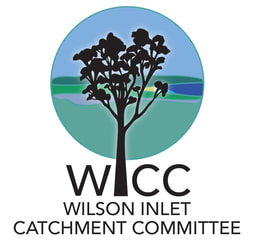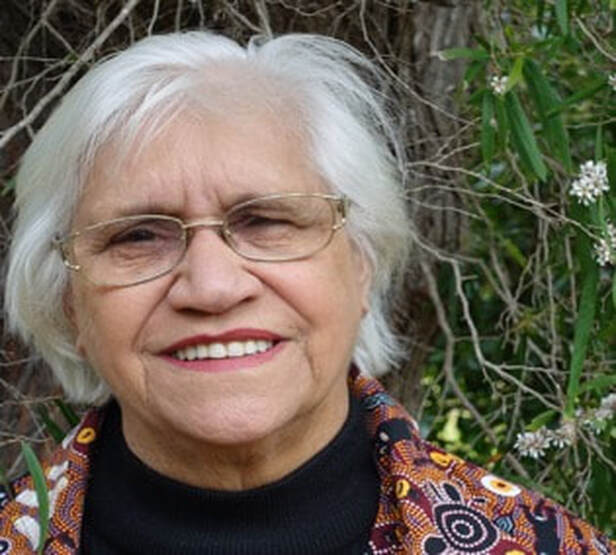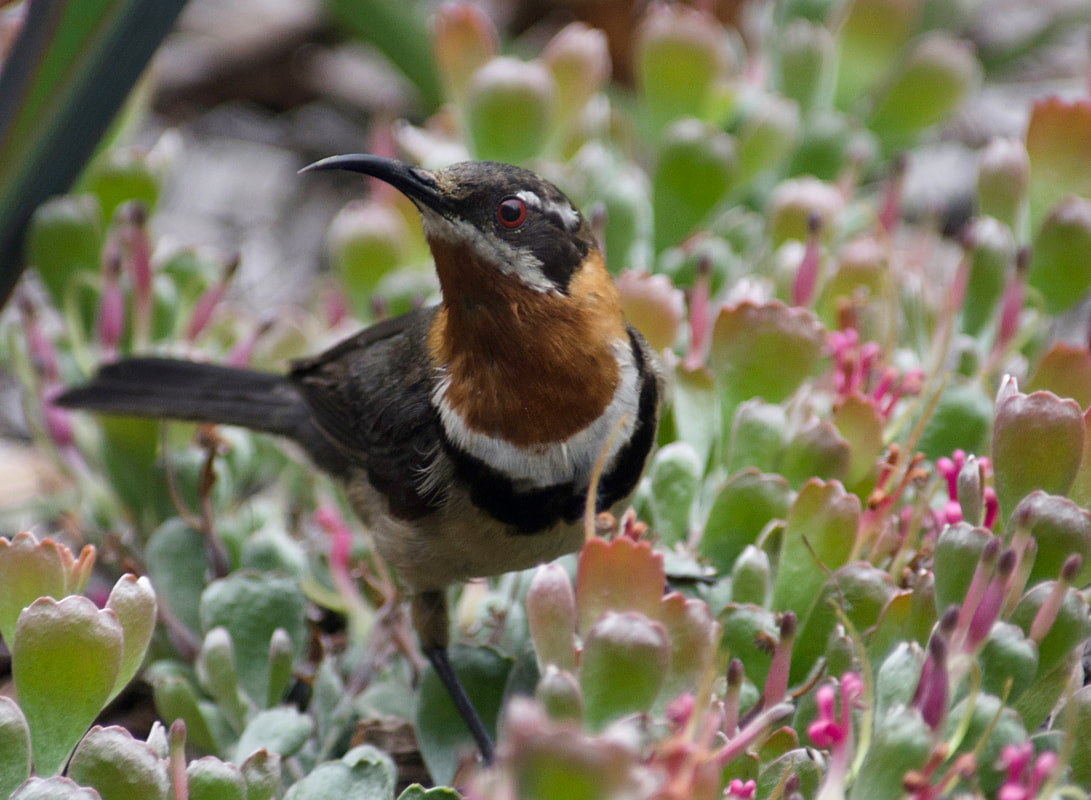Interview with Menang Elder Aunty Carol Petterson
|
Listen to 'Pearls of Wisdom' from Aunty Carol Peterson
|
|
Aunty Carol Petterson
Aunty Carols totem the Western Spinebill photo courtesy of Geoff Taylor
|
With the arrival of our many migratory shorebirds to our local inlets we thought it was timely to chase up some Noongar knowledge regarding birds. WICC recently sat down with Noongar Elder, Carol Petterson to chat about their relationship with birds.
WICC: Tell me about the Noongar relationship with birds?: We Noongar Peoples hold birds in three domains….spiritual, as weather sentinals and of course as food. Spiritually, We believe that when our people die and pass over, after a time their spirits return mostly in the form of birds. The beautiful blue wrens of Denmark, the Charcheegar are believed to be the spirits of our ancestors who lived in the area and have since passed on...but their spirits remain to maintain and guide our cultural connection to Denmark. The Willy-wag Tail or the Djitti-Djitt or the Coolbardie, the magpie are believed to hold the spirit of someone beloved whom as passed and are revered by many Noongar families. For some of our Noongar Peoples, the sight or call of the Curlew of Wirlo is the bearer of bad news or the signal of a death of a Noongar person to some people. For other clan groups, the Wirlo is their totem. Its crying in the night sends shivers down one’s spine. We believe that the majestic Warlitj or wedge-tailed Eagle is the ultimate guardian of the spirits of the land. His vision of far and wide ensures that our land and all its spirituality is safe. WICC: You mentioned as a weather sentinel. How does that work?: The black cockatoos or Gnoolalark as we call them, told us of coming rains, Djarbin, the squeaker or grey currawong gave us 48 hours’ notice of coming strong winds. They would give a high shrill call for some time. In times past, we lived in flimsy shelters and the Djarbin’s waning gave us time to prepare our camps to withstand the wind and rain and we would then dig a trench around our tents to allow water to run away from our tent keeping us dry. You know there is so much to learn from our birds, especially about relationships. Watch and observe the discipline dished out to the young bird that upsets the family by bad misbehaviour and for not respecting protocols. If you have not already done so, then learn your favourite bird’s name in the Noongar Peoples language where you live, so that you too have your totem of your tribe |


